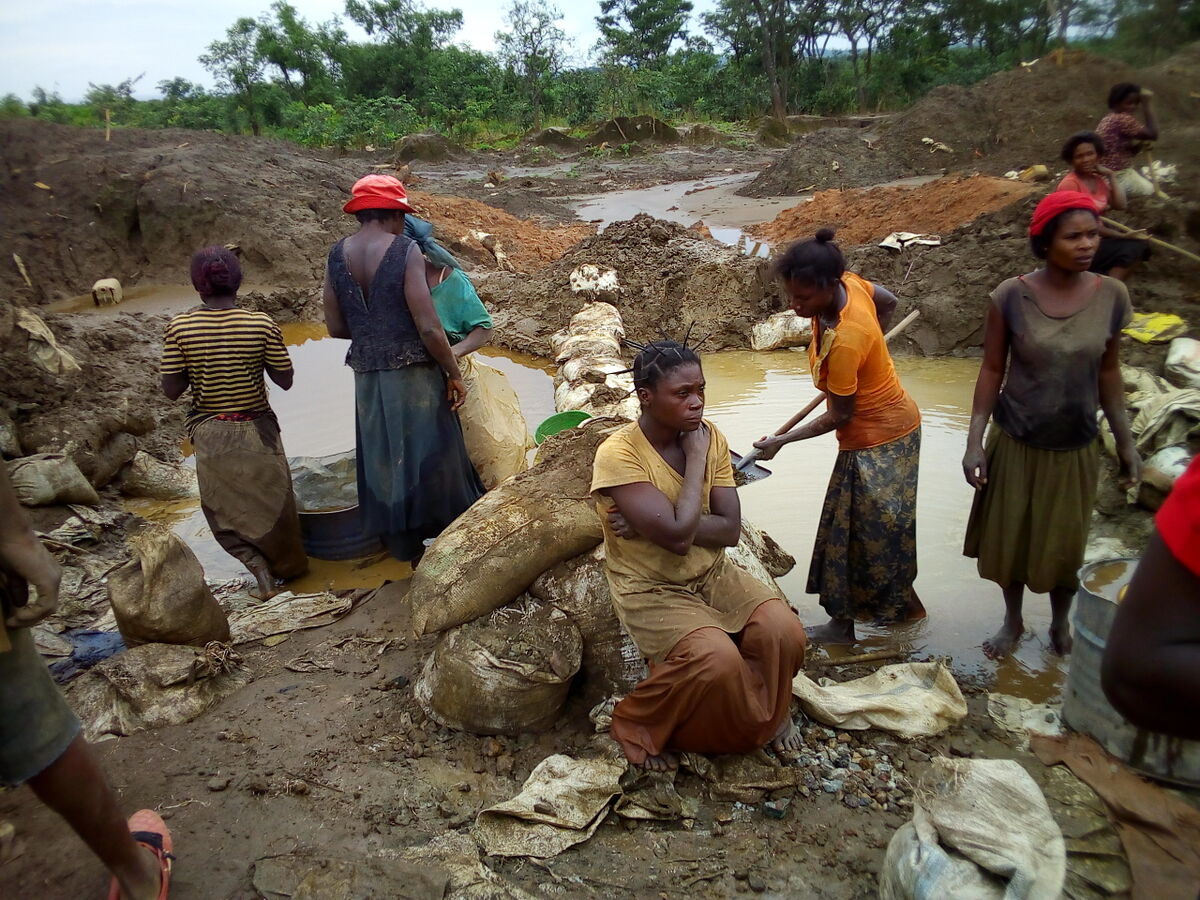- Austausch & Vernetzung
- Wissen & Lernen
- Advocacy
- Unsere Themen
Von André Shongo Diamba, Maguy Ngongo Omoy, John Malolo Zubela and Faustin Mukini
The Democratic Republic of Congo is rich in mineral resources , mainly in the east and south eastern region. Artisanal Small Scale Mining (ASSM) is reported as the main exploitation model. Congolese citizens are authorized to do mining in given official zones, however they have expanded in unauthorized illegal areas. ASSM and living zones are hard to live in especially as they are dangerous and unsafe; yet entire families migrate to such areas despite the poor living conditions. We conducted a systematic review to asses’ child marriage in this region and tried to get a better understanding of girls aged 6-9, and 10-15 who live in such environments. Children of these families can hardly go to school and drop out of it and are therefore forced to make a living. Most of these girls end up in sex trade. The risk of abuse is very high and early marriage reported.

The Democratic Republic of Congo (DRC) is a country with extraordinary mineral wealth. The country has substantial reserves of copper, cobalt, cadmium, diamonds, gold, silver, zinc, manganese, tin, uranium, germanium, columbite- tantalum (coltan), bauxite, iron ore and coal. It is estimated that the DRC contains 49 percent of world cobalt reserves, 10 percent of copper reserves and unexplored gold potential. [CASM, DFID and World Bank (2007)] Most of the known mineral resources are concentrated near the country’s eastern borders, and south into KATANGA province where it shares the rich copper belt zone with neighborhood Zambia. [Harvard Humanitarian Initiative (2015)]
However, 80 percent of Congolese mineral production is still undertaken by vulnerable, impoverished and largely illegal artisanal miners. Artisanal miners produce 90 percent of minerals in the DRC, according the World Bank. Between 500,000 and 2 million individuals are involved in DRC Artisanal Small Scale Mining (ASSM). [Weijs B., et al, (2012)] 12 to 15 percent of DRC’ populations depend on ASSM. [The World Bank (2008)]
Artisanal exploitation is defined in the 2002 DRC mining Code as any activity by means of which a person of Congolese nationality carries out extraction and concentration of mineral substances using artisanal tools, methods and processes, within an artisanal area limited in term of surface. [PACT (2010)]
ASSM is frequently associated with negative social and health impacts, including migration of entire families. Other factors are associated with the negative ASSM impact has including substance abuse, health problems, sex trade, child labor, gender discrimination and violence. [ILO (2007)], [Rhys Evans (2018)]
This paper aims to follow girls aged 6-9 and 10-15 among 8,000 children reported in ASSM in Haut Katanga Province and 11,000 in LUALABA. [Annie Kelly, The Guardian, (2016)]

A system review was undertaken to asses’ child marriage in this region. Texts books and scholarly articles were screened from January to May 2019. An observation approach was made during a short visit on ground. A narrative approach to synthesis was adopted.
We found a large number of girls and boys aged 6-9 and 10-15, the first group helping their mother by bearing babies or with small tasks as triage, and second group more involved in mining operations (handling, transportation, cleaning) in different mining sites in Haut KATANGA (n=8,000) and LUALABA (n=11,000) despite the prohibition of child labor by Congolese law and UN Convention ratified by the nation.
Three distinct categories of children and girls are reported in ASSM Zones; those who work with their families (parents), those who work with other adults, and those who work alone.
We can clearly observe a negative impact of this work for children and girls with regards to education (illiteracy, dropping out of school), health (sexual abuse, early marriage), and welfare. Future opportunities are just not existent.
Children, girls and women make significant proportion of ASSM workers. They carry out a full range of activities, in mines and in providing supportive services. Outside the mines, girls and women give services to the camps by selling good, being employed restaurants and hotels or by earning a livelihood as sex worker.
ASSM sites often attract or cultivate a sex trade, which results in health risks such as HIV and other sexually transmitted diseases as well as in exploitation of those entering the sex trade unwillingly. Early sex and marriage practices (early marriage, forced sex or through exchange of food or money) tend to aggravate the need for children to work in mines. A large number of young men living far from home and family, make a rapid daily turnover of cash which results in high alcohol and drugs consumption. This very often leads to sexual abuse of girls and gender based violence.
HIV/AIDS awareness is low and prevention tends to rely on superstition rather than behavioral change, condoms, testing, counselling, etc. Other health issues are linked to the work in ASSM such as lung diseases, skin diseases, pollution, radiation and cancer.
Presented as ores cocktail, acid and radioactivity reactions are reported during cleaning processes.
There is enough evidence that ASSM environment is not appropriate for health and education of children aged 6-9 and 10-15. Ecologic theory of change model is the best framework for fighting against girls’ presence and attendance in ASSM communities. This theory of change recognizes the interconnected influences of family, community and society on child’s protection and development and therefore works in partnership with actors at different levels. We believe that three strategies are needed to prevent and solve this issue:
Certainly, we need to better understand the risk factors and vulnerabilities in such communities in order to improve the living conditions of children in these areas.